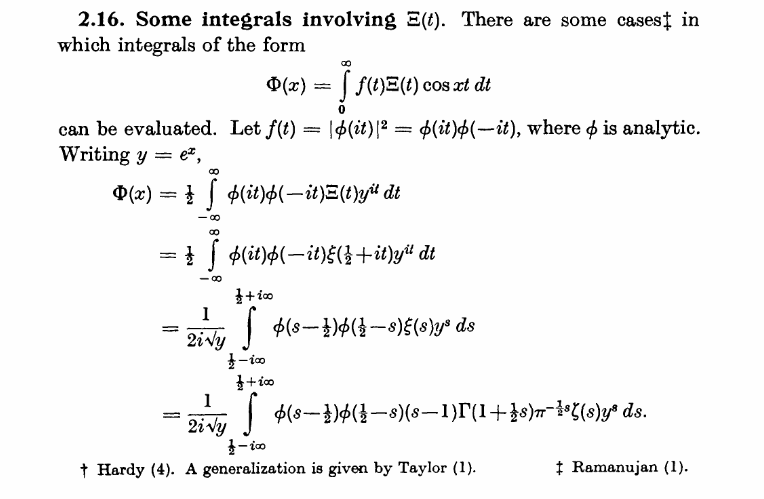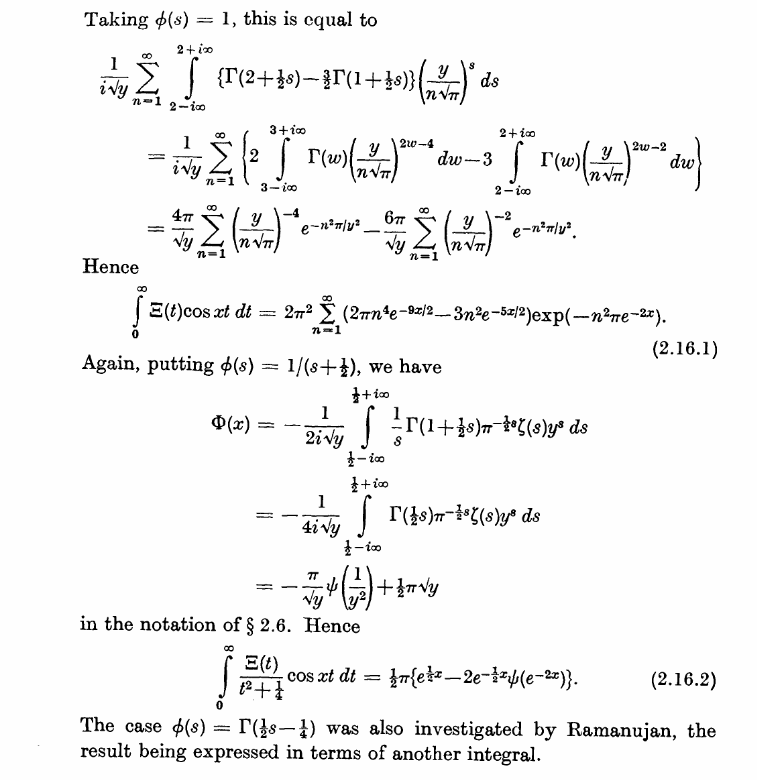Let $f(x) = 2\sum_{n = 1}^\infty e^{- \pi n^2 x^2}$ and $E(s) = \pi^{-s/2} \Gamma(s/2)\zeta(s)$.
For $Re(s) >0$ : $2\int_0^\infty x^{s-1} e^{-\pi n^2 x^2} dx = n^{-s} \pi^{-s/2}\Gamma(s/2) $ so we have for $Re(s) > 1$ :
$$E(s) = \Gamma(s/2) \pi^{-s/2} \zeta(s) = 2\sum_{n=1}^\infty \int_0^\infty x^{s-1} e^{-\pi n^2 x^2} dx = \int_0^\infty f(x) x^{s-1} dx \quad (1)$$
By inverse Mellin transform : $$f(x) = \frac{1}{2 i \pi}\int_{\sigma-i\infty}^{\sigma+i\infty} E(s) x^{-s} ds$$
but this is only true for $\sigma > 1$, since $E(s)$ has a pole at $s=1$.
Note that for $Re(s) > 1$ : $\displaystyle\quad\frac{1}{s-1} = \int_0^1 x^{s-2} dx = \int_0^\infty \frac{1_{x < 1}}{x} x^{s-1} dx $,
and for $Re(s) < 1$ : $\displaystyle\quad-\frac{1}{s-1} = \int_1^\infty x^{s-2} dx = \int_0^\infty \frac{1_{x > 1}}{x} x^{s-1} dx $
Hence, at least for $Re(s) > 1$ :
$$E(s) - \frac{1}{s-1} = \int_0^\infty \left( f(x)- \frac{1_{x < 1}}{x}\right) x^{s-1} dx \qquad (2) $$
indeed, this is true also for $Re(s) > 0$ (see below) and we get, for $Re(s) \in (0,1)$ :
$$E(s) = \int_0^\infty \left( f(x) - \frac{1}{x}\right) x^{s-1} dx$$
Finally, by inverse Mellin transform, for $\sigma \in (0,1)$ : $$f(x) - \frac{1}{x} = \frac{1}{2 i\pi}\int_{\sigma -i \infty}^{\sigma +i \infty} E(s) x^{-s}dx$$ and $\displaystyle f(1/y) - y = \frac{1}{2 i\pi} \int_{\sigma -i \infty}^{\sigma +i \infty} E(s) y^{s}dy$ as expected.
You can show $(2)$ converges for $Re(s) > 0$ by proving $\displaystyle\theta(x) = 1+ f(x) = \sum_{n =- \infty}^\infty e^{-\pi n^2 x^2}$ fulfills the functional equation $$\theta(1/x) = x\,\theta(x)$$ using the Poisson summation formula (see this proof).
So that $\displaystyle f(1/x) = \theta(1/x)-1= x \,\theta(x)-1 = x(f(x)+1)-1$ and : $$\int_0^1 \left(f(x)- \frac{1}{x}\right) x^{s-1} dx = \int_1^\infty (f(1/y) - y) y^{-s+1} \frac{dy}{y^2} $$ $$= \int_1^\infty (y (f(y)+1)-1-y) y^{-s-1} dy = \int_1^\infty (y f(y)-1) y^{-s-1} dy$$ whence $$E(s) - \frac{1}{s-1} = \int_0^1+\int_1^\infty \left(f(x)-\frac{1_{x<1}}{x}\right) x^{s-1}dx $$ $$= \int_1^\infty \left( f(x) (x^{s-1} + x^{-s}) - x^{-s-1}\right) dx$$ converges for $Re(s) > 0$.
Riemann obtained the functional equation $E(s) = E(1-s)$ from $$E(s) - \frac{1}{s-1} + \frac{1}{s} = \int_1^\infty f(x) (x^{s-1} + x^{-s}) dx$$ which is entire.


